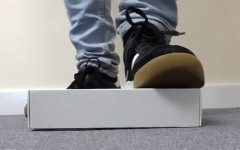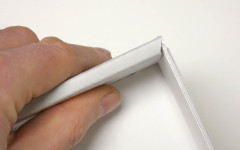How to store model trains
Like many collectibles, model trains are varied in size, shape and material. So, how do you store them and be sure that they are well protected? Could your current storage actually be causing damage? Here's what you need to consider.
Is the material acid-free?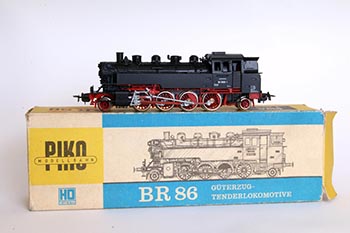
'Acid-free' is widely used as a term, sometimes alongside 'archival'. 'Archival' is fairly meaningless unless supported by correct specification, you can dig into that a little more on our 'what is an archival box' blog. Acid-free can be specified at the time of manufacture, but that doesn't necessarily mean it will remain that way. Many materials are 'acid-free' when manufactured but eventually become acidic - plastics/paper cardboard/foams can be acid free at point of manufacture but become acidic as they age. What you need to look for is, is the material acid-free and will it remain acid free?
Materials that generally are not inert or acid-free:
- Plastic boxes, bags, etc that contain PVC (there are exceptions)
- Standard cardboard
- Normal pulp based paper including newspaper, tissue paper
- Foam sheets and loose fill foam packing
- Wood
- Painted or varnished surfaces
What damage can acid do to your model train?
The acids from acidic materials can speed up the degradation of the materials your trains, carriages or original packaging materials are made from. This can be seen in discoloured paint or decals, yellowing and embrittlement of plastics.
Aside from the damage caused by the acidic materials, they will themselves break down and no longer protect the train. Acidic paper and card will become brittle and tear easily, foam and plastics could crumble, turn into dust, or leach residues.
How can you protect your train from acids?
A completely acid-free storage environment will help to preserve your collection and prevent damage. Our materials are all acid-free and suitable for long term storage. Our boards are 'buffered' which helps protect against acids from other sources such as from shelving, neighbouring objects and even airborne pollutants. You can read more about buffering in boxes here.
How to measure up for a storage box for trains without boxes
Measure the three dimensions and add at least 5mm to each. The extra 5mm allows space for acid-free tissue paper to be used to prevent the train from moving inside the box.

Measure the train's maximum height + 5mm
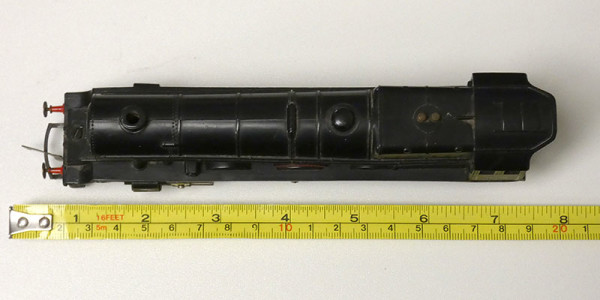
Measure the train or carriage's maximum length including any coupling +5mm
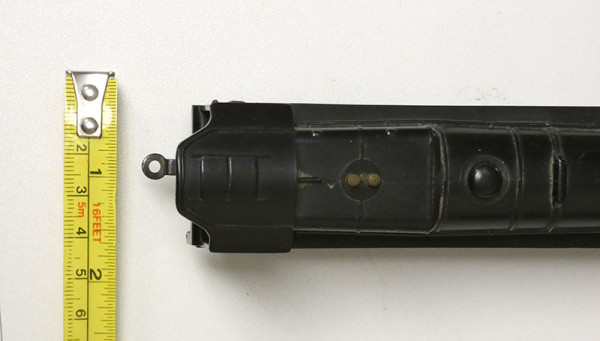
Measure the widest point of the train +5mm
 Once you have the three dimensions of each item in the set you can see which is the largest. Use the largest of each dimension to build your individual boxes. This will give you a uniform height and length. Having a uniform dimension to work to means you can also make an outer box to store your collection in like the one shown in the image. You don't need to do this, if you're storing in a drawer or other organiser then individual smaller boxes are fine.
Once you have the three dimensions of each item in the set you can see which is the largest. Use the largest of each dimension to build your individual boxes. This will give you a uniform height and length. Having a uniform dimension to work to means you can also make an outer box to store your collection in like the one shown in the image. You don't need to do this, if you're storing in a drawer or other organiser then individual smaller boxes are fine.
What size box will I need for an 'O' or 'OO' gauge train?
As mentioned previously, most models will vary slightly, however, we have put together these pre-configured sizes for your convenience (you'll need to check against your own model) and measure as per the above advice.
O gauge box - 560mm L x 63mm W x 63 D
OO gauge box - 335mm L x 50mm W x 53mm D
It's not only the trains that may require storage, you may also wish to store pieces of scenery from your layout. These may have been handmade and otherwise impossible to find a box of the exact size, that's what we're here for! Unlike trains, pieces from your layout may be a bit more fragile and damage os risked when handling. We always recommend a drop-front box in these instances, it will allow much better access for the contents.


